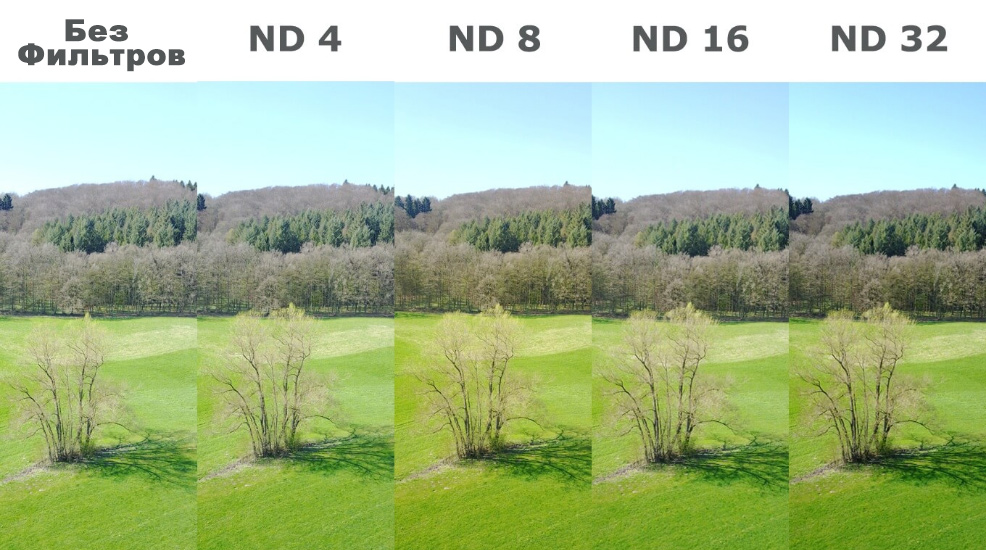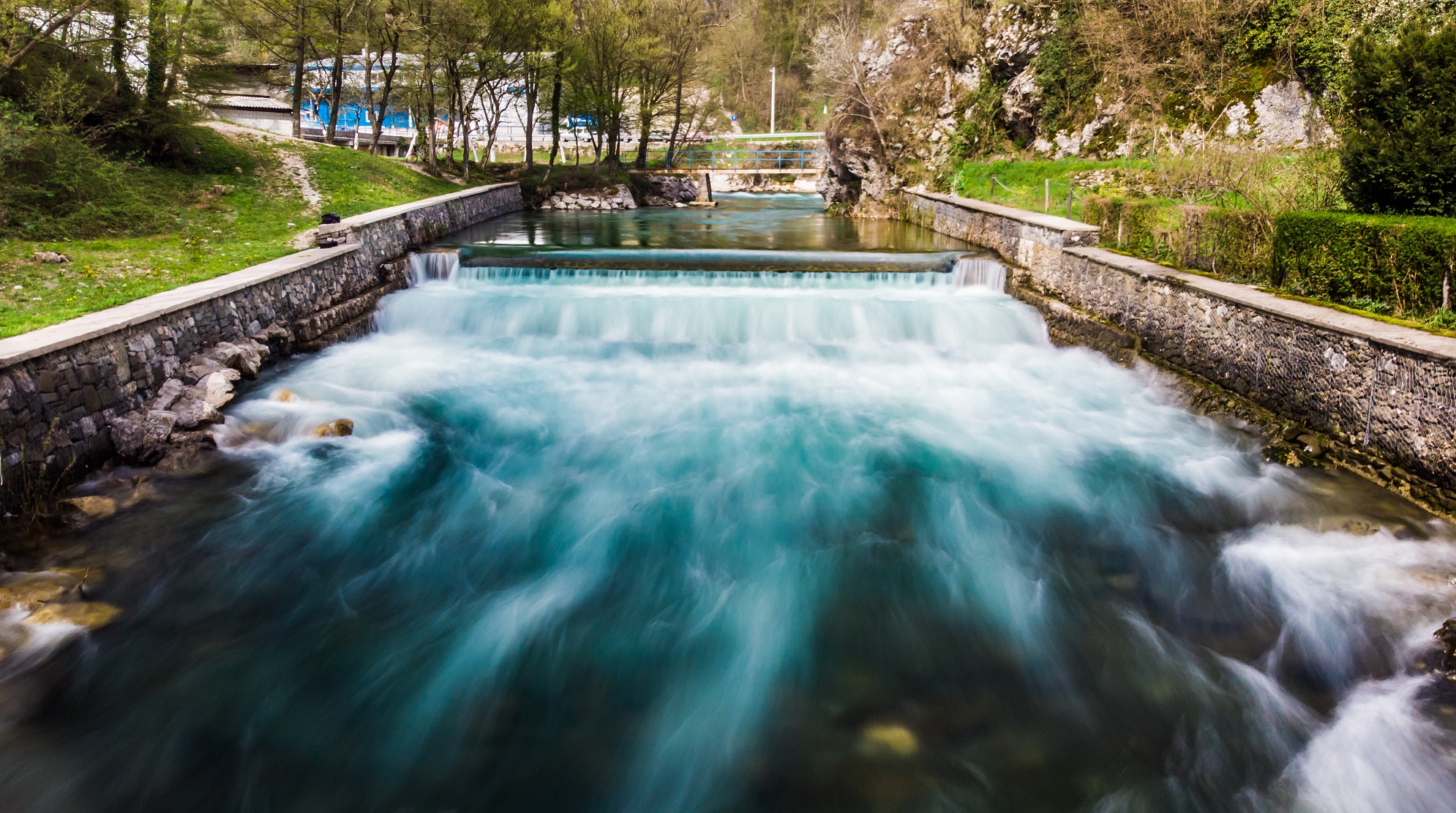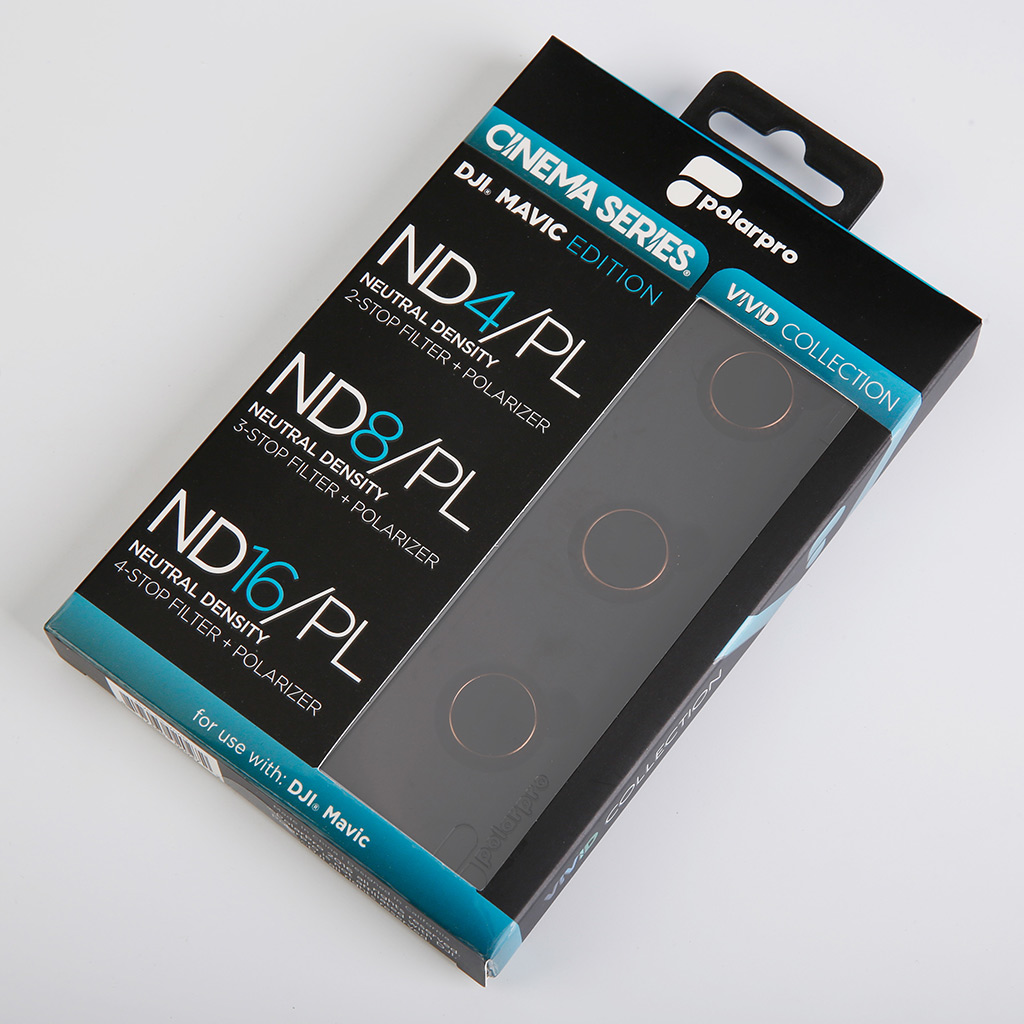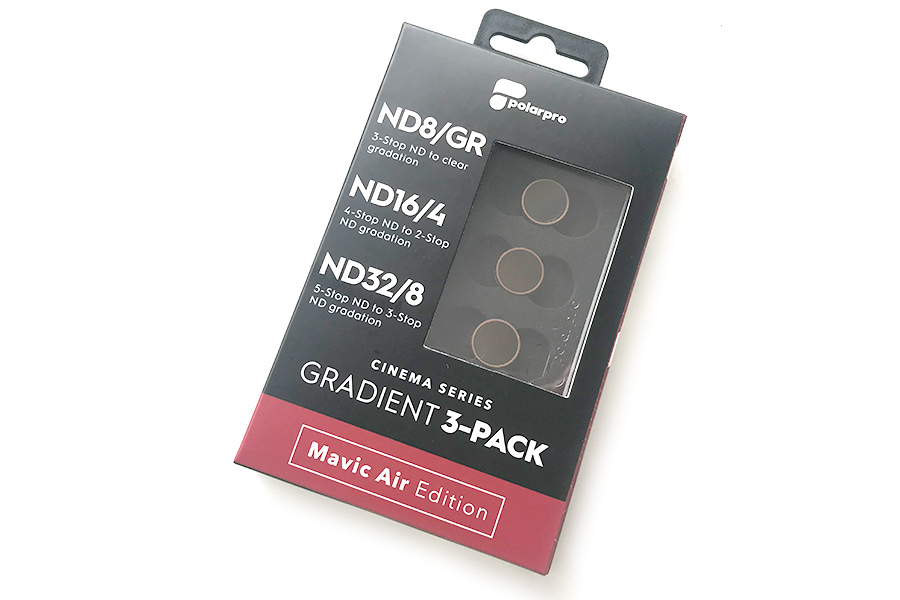Why does my drone have an ND filter?
Short. The goal of ND filters is to reduce the amount of light that enters the matrix, so you can call them your drone's sunglasses.

The ND filter reduces the amount of light that enters the matrix, providing a longer exposure. Reducing the amount of light may be necessary in several cases. For example, when shooting in the mountains, where there is a lot of snow, or when shooting on sandy beaches. In such situations, the minimum shutter speed of the camera may not be enough to provide the necessary exposure. In addition, ND filters can be used to emphasize movement (for example, waterfall drops) or to give the image a softer surreal look or even remove dynamic objects from the landscape. Using a filter for the copter will help set up the required exposure when taking pictures of rivers, waterfalls and other "moving pictures".
The ND filter is not just a sheet of tinted glass placed in front of the camera lens. A high-quality light filter should reduce the level of light, without affecting the contrast, provoking the appearance of glare and most importantly affect sharpness and detail. Therefore, the choice of filter manufacturer is extremely important. Inexpensive filter kits produced by small companies may not meet all requirements and, at the same time as reducing the amount of light, “complement” the image with unnecessary reflections and reflections. Therefore, it is important to choose a reputable manufacturer.

The effect that can be achieved with an ND filter is almost impossible to recreate when processing a snapshot.
But much more important ND filters are for shooting video. The thing is that modern cameras allow you to shoot with a very short shutter speed, which is useful for taking clear photos, but on the contrary is not suitable for shooting video. When shooting with a slow shutter speed, the video may turn out to be too sharp and “jerky.” The cameras of some copters allow you to limit the amount of light using a radar diaphragm (for example, Phantom 4 Pro / Advor camera DJI Zenmuse X4s or X5 / 7 with full lenses), but even this does not always help. Close the diaphragm to infinity is impossible, because This can provoke a reduction in detail and image degradation, and also affects the depth of field, which may be unacceptable for any particular task (this is especially true for long-focus lenses for Zenmuse cameras). Therefore, it is logical and easy to use ND filters to increase the exposure. Thus, we have the opportunity to shoot video at the shutter speed required for obtaining “cinematic” in the region of 1 / 100-1 / 120, while not closing the aperture more than necessary and not risking to get a blurred image.
Neutral filters vary in dimming power. The higher the density of the filter, the less light it passes into the frame.
ND filters will help to make spectacular photos of water - a raging mountain river instantly turns into milky foam. And take a similar picture

In this case, the owner of the copter can take such a picture, even in sunny weather.
The f-stop indicator is the ratio of the focal length of the lens to the diameter of the entrance pupil. And if in simple terms, the greater the number of "F-stop", the less light will fall into the lens. This will allow you to better control the exposure of the image or video you are trying to capture in flight.
To find out how the various ND filter models relate to the “F-stop” level, see the table below.

In addition to ND filters, there are many filters for your drone, and all of them will give different results:

CPL / PL are filters that have a polarizing layer and allow you to remove glare and reflections from light reflecting surfaces, water, glass, etc. (except metal). In addition, these filters can enhance the color of the sky and foliage, but you need to remember that they work only at a certain angle.

The effect of the polarization filter is maximized when the angle between it and the sun's rays is 90 degrees. If the sun is behind the copter or vice versa shines in the lens, then the effect of the filter will be almost negligible or not noticeable at all. In addition, any polarizing filter has a certain percentage of blackout, it is also worth considering when shooting at sunset or sunrise to control exposure and sensitivity.

Gradient filters are filters that have a smooth dimming from one side to the other. Such a filter can be considered a kind of ND filter, but providing a smooth transition from the darkened part to the fully transparent one. This filter can be used to darken the sky while maintaining brightness on the ground. For example, this can be useful when flying over the forest on a clear day. The lower lighter part will work out the details of the trees, and the upper part will be darkened.
The PolarPro Gradient series is a great solution for shooting landscapes. Using the usual ND filter, you can correctly set shooting parameters only for the sky or only for the earth, with a gradient filter you can get the widest dynamic range.
REMEMBER:using a specific filter may partially reflect your style as an operator or photographer. So choose the one that suits you.
To summarize, easy-to-use quick-release filters can help you get high-quality and beautiful images and minimize the amount of post-processing in the editor. Neutral filters will not only prevent fans of aerial photography and videographers, but also help to raise the quality of the material to a higher level.
For those who are thinking about buying, we made a selection of filters by model filters for DJI Mavic Air , DJI Mavic Pro , DJI Phantom 4 Pro , DJI Spark .
Ps. We apologize for the previous edition of the article. The article has been updated.

The ND filter reduces the amount of light that enters the matrix, providing a longer exposure. Reducing the amount of light may be necessary in several cases. For example, when shooting in the mountains, where there is a lot of snow, or when shooting on sandy beaches. In such situations, the minimum shutter speed of the camera may not be enough to provide the necessary exposure. In addition, ND filters can be used to emphasize movement (for example, waterfall drops) or to give the image a softer surreal look or even remove dynamic objects from the landscape. Using a filter for the copter will help set up the required exposure when taking pictures of rivers, waterfalls and other "moving pictures".
The ND filter is not just a sheet of tinted glass placed in front of the camera lens. A high-quality light filter should reduce the level of light, without affecting the contrast, provoking the appearance of glare and most importantly affect sharpness and detail. Therefore, the choice of filter manufacturer is extremely important. Inexpensive filter kits produced by small companies may not meet all requirements and, at the same time as reducing the amount of light, “complement” the image with unnecessary reflections and reflections. Therefore, it is important to choose a reputable manufacturer.

The effect that can be achieved with an ND filter is almost impossible to recreate when processing a snapshot.
But much more important ND filters are for shooting video. The thing is that modern cameras allow you to shoot with a very short shutter speed, which is useful for taking clear photos, but on the contrary is not suitable for shooting video. When shooting with a slow shutter speed, the video may turn out to be too sharp and “jerky.” The cameras of some copters allow you to limit the amount of light using a radar diaphragm (for example, Phantom 4 Pro / Advor camera DJI Zenmuse X4s or X5 / 7 with full lenses), but even this does not always help. Close the diaphragm to infinity is impossible, because This can provoke a reduction in detail and image degradation, and also affects the depth of field, which may be unacceptable for any particular task (this is especially true for long-focus lenses for Zenmuse cameras). Therefore, it is logical and easy to use ND filters to increase the exposure. Thus, we have the opportunity to shoot video at the shutter speed required for obtaining “cinematic” in the region of 1 / 100-1 / 120, while not closing the aperture more than necessary and not risking to get a blurred image.
Neutral filters vary in dimming power. The higher the density of the filter, the less light it passes into the frame.
ND filters will help to make spectacular photos of water - a raging mountain river instantly turns into milky foam. And take a similar picture

In this case, the owner of the copter can take such a picture, even in sunny weather.
The f-stop indicator is the ratio of the focal length of the lens to the diameter of the entrance pupil. And if in simple terms, the greater the number of "F-stop", the less light will fall into the lens. This will allow you to better control the exposure of the image or video you are trying to capture in flight.
To find out how the various ND filter models relate to the “F-stop” level, see the table below.

In addition to ND filters, there are many filters for your drone, and all of them will give different results:

CPL / PL are filters that have a polarizing layer and allow you to remove glare and reflections from light reflecting surfaces, water, glass, etc. (except metal). In addition, these filters can enhance the color of the sky and foliage, but you need to remember that they work only at a certain angle.

The effect of the polarization filter is maximized when the angle between it and the sun's rays is 90 degrees. If the sun is behind the copter or vice versa shines in the lens, then the effect of the filter will be almost negligible or not noticeable at all. In addition, any polarizing filter has a certain percentage of blackout, it is also worth considering when shooting at sunset or sunrise to control exposure and sensitivity.

Gradient filters are filters that have a smooth dimming from one side to the other. Such a filter can be considered a kind of ND filter, but providing a smooth transition from the darkened part to the fully transparent one. This filter can be used to darken the sky while maintaining brightness on the ground. For example, this can be useful when flying over the forest on a clear day. The lower lighter part will work out the details of the trees, and the upper part will be darkened.
The PolarPro Gradient series is a great solution for shooting landscapes. Using the usual ND filter, you can correctly set shooting parameters only for the sky or only for the earth, with a gradient filter you can get the widest dynamic range.
REMEMBER:using a specific filter may partially reflect your style as an operator or photographer. So choose the one that suits you.
To summarize, easy-to-use quick-release filters can help you get high-quality and beautiful images and minimize the amount of post-processing in the editor. Neutral filters will not only prevent fans of aerial photography and videographers, but also help to raise the quality of the material to a higher level.
For those who are thinking about buying, we made a selection of filters by model filters for DJI Mavic Air , DJI Mavic Pro , DJI Phantom 4 Pro , DJI Spark .
Ps. We apologize for the previous edition of the article. The article has been updated.
Only registered users can participate in the survey. Sign in , please.
